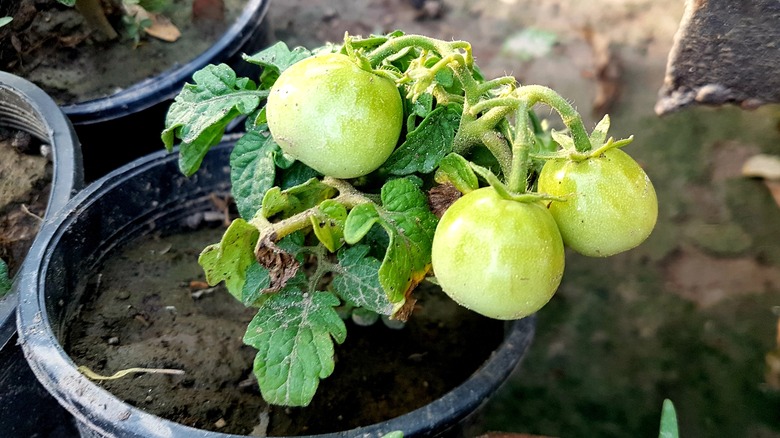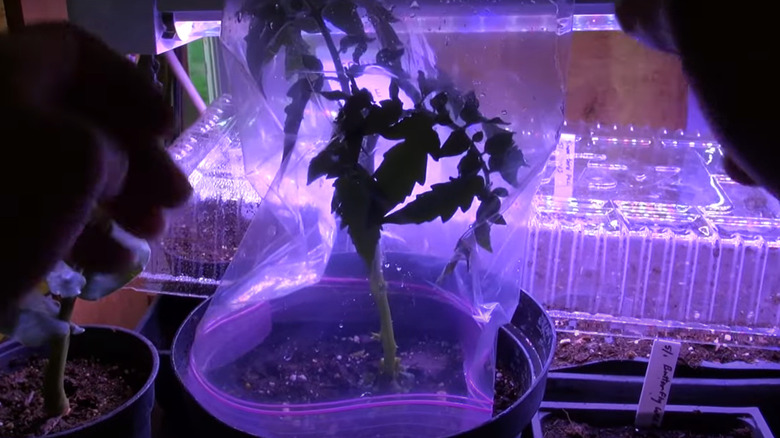What Is A Pomato Plant (& Should You Grow One)?
You see the word "pomato" for the first time, and your mental gears start turning. This plant is clearly part tomato, but what the heck is the other part? Pomegranate? Apple, like how the French word for this fruit is "pomme"? Rest assured that it's not the addictive tobacco-spliced tomatoes developed by the Simpsons. A pomato plant is basically a tomato above ground with lovely potatoes for roots. Who wouldn't want this space-saving combination? Get inspired with this vegetable garden idea that's equal parts genius and magical.
Tomatoes are a staple of many home gardens, but potatoes not so much. If the same amount of effort you put toward each tomato plant could also nurture a potato crop, then why not swap your tomato plants out for pomatoes? To set yourself up with a pomato plant, you can either graft your own with a tomato and a potato plant. This process might sound too daunting, so you may be able to find and order a pre-grafted pomato. However, with the searching involved, it could actually save you time by uniting the two plants yourself! Plus, pre-grafted plants come with a high price tag.
Joining a tomato and a potato plant into one has other benefits besides space savings. Pomatoes save both water and fertilizer, since one dose will take care of what otherwise would be two separate plants. If you're able to find a pre-grafted pomato plant, the two plant types may be specifically chosen to complement each other or to stave off certain pests and diseases. This might help you end up with healthier tomato plants and a bigger potato harvest while using less pesticide.
How to graft a pomato plant
Check in your potato bin: Do you have any spuds that have sprouted? A sprouted store-bought potato can be a viable base for a pomato plant. However, from an expert's point of view, retired Michigan State University horticulture professor Gary Heilig cautions that it's better to avoid sprouted spuds from the kitchen, since it's hard to guarantee that they're free of diseases. Start two or three seed potatoes in soil in separate starter pots or large pots that they will live in until harvest; do this about a week before starting your tomato plants, since the former take longer to grow. Once both the tomato and potato plants are between 8 and 10 inches tall, they're ready for grafting. (The tomato should have one leaf pair.)
Water the plants about an hour before starting the grafting process. Set aside a utility knife, grafting tape, and bleach or rubbing alcohol to sterilize your blade. With your sterile blade, trim off the upper portion of the tomato plant, and slice two small diagonal cuts at the end of the tomato stem that angle to a point. Trim away all but about 2 inches of the potato plant, and make a vertical cut about ½ inch long into the cut end of the stem. Slip the cut stem of the tomato plant into the potato plant's cut stem, and bind the connection securely with grafting tape. Cover the plant with a clear plastic bag for a few days to hold in moisture;a repurposed bread bag is an eco-friendly choice. Once the plant can stand firmly without being covered, it's ready to transplant if need be.

